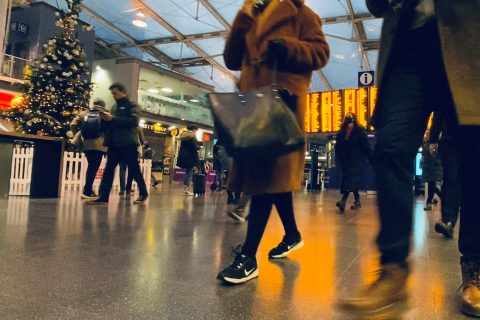‘A black Friday for Novi Sad’: Deadly Serbian station collapse triggers blame game

Fourteen people were killed and three severely injured this weekend in Serbia’s Novi Sad after a roof collapsed at the entrance of the city’s newly rebuilt railway station. Serbia’s prime minister described it as a “black Friday for all of Serbia and Novi Sad,” and said the blame for the tragic incident would be assessed with “a cool head, rationally, and not with tweets and announcements on social media.”
On Friday afternoon, rescue workers were forced to search through piles of concrete and twisted metal for survivors after a 35-metre length of roofing collapsed over the entrance of Novi Sad’s railway station.
The collapse occurred at noon local time on a sunny day in the city, about 70 kilometres northwest of the Serbian capital of Belgrade. Cranes and bulldozers helped to sift through the wreckage alongside rescue and construction workers, while medical staff and ambulances waited nearby. They continued to pull bodies from the rubble late into the evening.
Serbian President Aleksandar Vučić promised swift justice for the victims. “It is difficult to say anything meaningful,” he said in a televised address. “As the president of Serbia, I demand that all those who are responsible for this are … punished.”
A black Friday for Novi Sad
Train departures were halted from the station, according to local news, which reported that a building reconstruction had been completed this summer, but that the part of the roof that collapsed had not been included in the project.

“This is a black Friday for all of Serbia and Novi Sad,” Prime Minister Miloš Vučević told reporters. “Regardless of the fact that this building was constructed in 1964, we will insist that those responsible for this tragedy are identified.”
Speaking from Shanghai, where he was attending a Chinese trade fair, he told journalists that he had spoken with the president about who might be responsible for the incident: “We will make that decision with a cool head, rationally, and not with tweets and announcements on social networks.”
“We will see what the final decision will be. You don’t run away from it, you don’t steal time. I think the most important thing is to understand the pain of the families of the victims, to allow space for what is part of our custom, part of the culture, which is for the families to bury and send their victims in peace and for everyone to respect that.”
Renovation followed by collapse
However, he stressed that the investigation was now in the hands of the public prosecutor’s office and the police, adding that he was informed that everyone who was in the chain of decision-making about the station’s reconstruction had been giving statements on the incident and the project’s implementation.
The train station has been renovated twice between 2021 and 2024, but the canopy above the main entrance was not included in the works, according to the government. The site was inaugurated by President Vučić and his Hungarian counterpart Viktor Orbán over two years ago with much fanfare, part of plans to make the station a major stopover for a high-speed line between Belgrade and Budapest.
Critics of Serbia’s government have already attributed the tragedy to corruption and incompetence in the renovation, with one opposition politician stating that “this is not an accident, this is murder.” In Belgrade, liberal opposition Green-Left Front rallied outside the Serbian government headquarters, throwing red paint on the ground to send a message that “you have blood on your hands.”
“Many things are currently unknown and the truth must be told,” said the Serbian prime minister. “No one has all the data because it is really a very complex question… we are talking about the entire railway station, then how the accident happened, what happened, how was it possible for the construction to slow down, how was it possible for the structure to give in all of a sudden.”
Read more:




